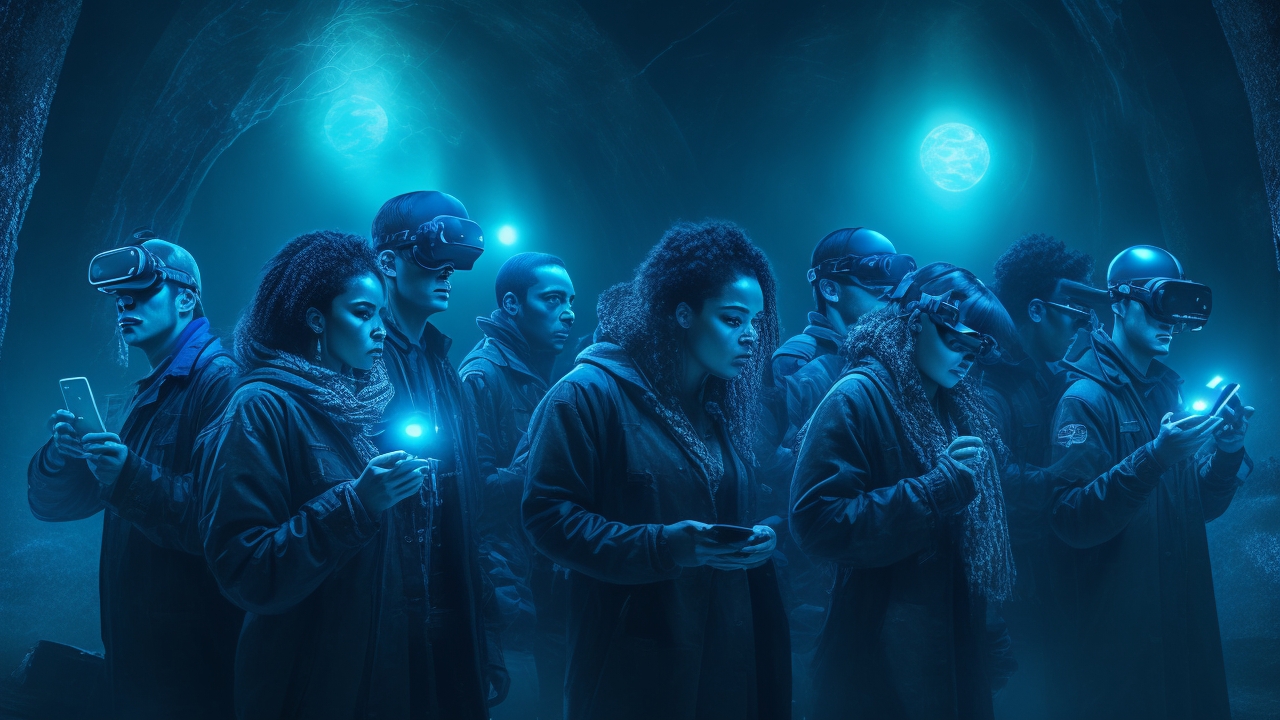The night air hums not just with the whisper of unseen presences, but increasingly with the static of Wi-Fi and augmented reality. In 2025, the most cutting-edge supernatural mysteries aren’t just haunting creaky attics—they’re infiltrating our phones, our virtual worlds, and our digital lives.
The Digital Dawn: How Technology Is Transforming Paranormal Investigation
Once, seeking out the supernatural meant gathering EMF meters and thermal cameras for long, chilly nights. Now, the paranormal research community is pioneering a bold new frontier: exploring hauntings and mysteries through virtual reality, AI-driven analysis, and online investigations. According to trends highlighted by Bryan Walaspa, techno-horror and digital hauntings have surged, with tales of haunted smart homes and sentient apps captivating both researchers and everyday mystery seekers.
This isn’t just fiction—teams now use VR simulations to recreate historical events at supposed haunted sites, hoping to provoke paranormal activity or uncover residual energies. Augmented reality apps let us interact with supernatural lore layered over familiar streets and buildings, turning every smartphone into a potential ghost detector.
The Surge of Interactive Paranormal Experiences
But the most impactful change? The rise of interactive supernatural events, where participants aren’t just observers but investigators. Digital mystery games, online séances, and live-streamed ghost hunts have united a global community of believers and skeptics. As Walaspa notes, interactive horror isn’t confined to cinema—it’s everywhere from choose-your-own-adventure stories to virtual haunted mansions, where every decision can shift the narrative and unlock new layers of the unexplained.
Who Believes—and Why? Statistics Behind the Supernatural Surge
Belief itself has evolved: the 2025 Gallup survey revealed that 34% of Americans are now broadly open to the existence of multiple paranormal phenomena, averaging belief in five distinct mysteries each. This is a notable jump in multi-belief from previous years. Women (40%) and college nongraduates (38%) are especially likely to embrace these possibilities, according to the same study, signaling that openness to paranormal experiences transcends old stereotypes and touches every corner of society.
Meanwhile, skepticism stubbornly persists in some circles: 78% of Americans who attend religious services weekly remain resolutely skeptical—but even among this group, belief in psychic or spiritual healing stands at 33%. This nuanced tapestry of belief and doubt highlights how, in 2025, the supernatural is a conversation, not a dogma.
From Haunted Houses to Haunted Devices: Stories from the Field
Personal tales, too, are changing form. Investigators report not only classic apparitions but strange glitches: phones texting from unknown numbers, smart home alarms ringing with no cause, and even unexplainable presence detected in digital spaces where spirits could never have walked. The mystery grows richer—technology is both a new medium for supernatural phenomena and a new tool for collaborative research.
On llifs.com.au, paranormal field predictions for 2025 describe a ‘spirit’ of collaboration and curiosity. More people each year pursue the mystery not as isolated hobbyists, but connected as a community, openly sharing evidence, stories, and critique through forums, livestreams, and international networks. The research feels less territorial and more about building a collective wisdom—inviting skeptics and believers to examine new data together.
A Global Perspective: Folk Mystery Meets Modern Science
Another emerging trend is the globalization of mystical traditions. Folk horrors and ancient supernatural concepts from Africa, South America, and Asia are being woven into modern research. Paranormal investigators now dig deeply into legends of yōkai, shadowy forest spirits, and ancestral ghosts, leveraging both anthropological study and digital simulation to probe the roots of these mysteries. The international flavor reminds us: mystery is universal, and supernatural stories connect communities across languages and cultures.
Three Practical Tips: Exploring the Paranormal in the Digital Age
- Stay Skeptical, Yet Curious: Embrace new tech tools for supernatural research, but always question the results. False positives and digital glitches are common, so balance belief with healthy inquiry.
- Connect and Collaborate: Join online mystery forums, digital ghost hunts, or virtual research projects. Community dialogue expands your perspective and brings fresh evidence to light.
- Respect Tradition: Pair innovation with reverence for the past. Blending folklore study, spiritual practices, and new scientific analysis often uncovers deeper layers of the paranormal mystery.
Reflecting on the Supernatural Community’s Next Chapter
As the boundaries between digital and spiritual blur, our modern supernatural landscape is growing ever more enigmatic—and more inviting for researchers, fans, and explorers alike. The community’s warmth lies in its diversity: skeptics, believers, scientists, and storytellers all share a seat around the table, eager to puzzle through mysteries and support one another.
The future of paranormal research isn’t just about the next ghost story or haunted gadget—it’s about forming connections through shared curiosity, tension between doubt and belief, and the ongoing search for truth. Whether you’re an experienced investigator, a dedicated skeptic, or someone who just loves a good mystery, there’s a place for you in this expanding supernatural community. So come, bring your questions and your wonder—your spirit is most welcome.
